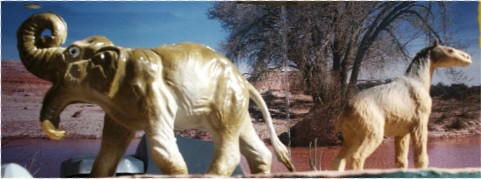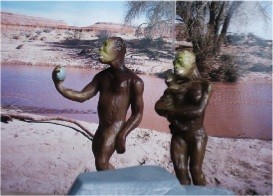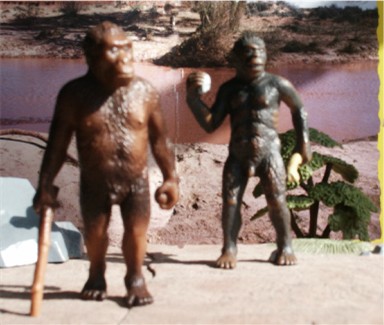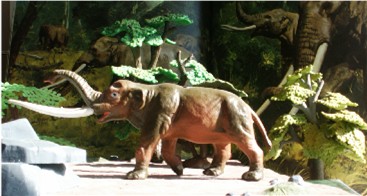
The Dinosaur Collector presents
The Pliocene 5.3 million to 1.8 million years ago the climate continues to cool and the tropics contract. Primates continued their evolution, with australopithecines. Bears, dogs, Camels and weasels from North America enter Africa. It must have seemed like a golden age for mammals before the glaciers of the Pleistocene devastated the different species.
update 11/9/07
Deinotherium shows up in the Miocene and fades out in the Pleistocene. It was 13 feet tall with no tusks in the upper jaw. Perhaps the tusks were used for stripping bark from trees. This side branch of the elephant family lasted 20 million year in Europe, Asia and Africa. Chalicotheres like are still found although fossils are rare. There are unsubstantiated reports of a chalicothere like animal in East Africa called the Nandi bear.

Starlux Deinotherium and Crypto Zoology series Nandi bear donated by Riff Smith.
Australopithecine's of many types have been identified living in Africa and maybe even in Indonesia and Siberia. Some had advance postures while others seem to have advanced brains. It is conjectured that the modern human lineage arouse from one or more of these groups. Generally these groups are upright apes living in the African savanna. Older theories speculated that hunting evolved at this time. This not currently widely accepted instead some groups were vegetarians while others were omnivores scavenging carcasses. There was minimal tool making. Tool making takes off with Homo habilius the successor to the southern ape men.


Australopithecine family from Carnegie Safari and Bullyland Australopithecine and Homo Habilius.
Mastodonts had teeth that differed from those of mammoths indicating a softer less abrasive diet. The mastodont Anancus looked much like a modern elephant being about 10 feet tall.. It had shorter legs. The tusks were very long almost as long as the whole body. It became extinct at the end of the Pleistocene when the grass lands expanded in Europe and Asia.

Starlux Mastodonte.